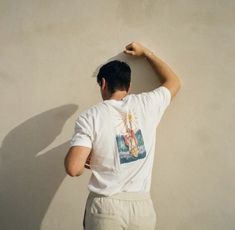The Timeless Appeal of T-Shirt: A Fashion Staple for Everyone

T-shirts have long been a staple in wardrobes around the world. From casual outings to high-fashion runways, the humble T-shirt has evolved significantly over the years. While it may seem like a simple piece of clothing, its versatility, history, cultural significance, and impact on the fashion industry make it one of the most important garments in modern history. In this article, we will explore the origins of the T-shirt, its evolution, the different styles available today, and its enduring appeal.
The History of the T-Shirt
The T-shirt as we know it today has its roots in the early 20th century. Originally, it was used as an undergarment worn beneath uniforms or formal clothing. The U.S. Navy played a significant role in popularizing T-shirts when they issued short-sleeved, crew-neck cotton shirts to their sailors in the late 19th and early 20th centuries. These shirts provided comfort in hot weather and allowed for easy movement during physical activities.
By the 1920s, T-shirts had become more common among laborers, who appreciated their comfort and affordability. However, it wasn’t until the 1950s that T-shirts gained widespread popularity as casual wear. Hollywood icons like Marlon Brando and James Dean played pivotal roles in transforming the T-shirt from an undergarment into a symbol of rebellion and youthful energy. Movies like A Streetcar Named Desire and Rebel Without a Cause showcased the T-shirt as a fashionable statement rather than just a practical piece of clothing.
The Evolution of T-Shirt Styles
Over the decades, T-shirts have evolved to include various styles, cuts, and designs. Some of the most popular styles today include:
- Crew Neck T-Shirts: The classic design, featuring a round neckline that sits close to the base of the neck. This style is perfect for layering or wearing on its own.
- V-Neck T-Shirts: Featuring a V-shaped neckline, these shirts offer a slightly dressier look and can elongate the neck, making them a popular choice among men and women alike.
- Polo Shirts: While technically a variation of the T-shirt, polo shirts feature a collar and buttons, making them suitable for both casual and semi-formal occasions.
- Graphic T-Shirts: These T-shirts feature printed designs, slogans, or artwork, allowing wearers to express their personalities, interests, or affiliations.
- Oversized T-Shirts: With a loose and relaxed fit, oversized T-shirts have gained popularity in streetwear and casual fashion.
- Tank Tops: Sleeveless T-shirts are ideal for warm weather and athletic activities, providing comfort and breathability.
- Longline T-Shirts: These have an extended length, often falling below the hips, making them a favorite in modern urban fashion.
- Crop Tops: A shorter version of the T-shirt that ends above the waist, popular among women and in trendy streetwear styles.
The Cultural Significance of T-Shirts
T-shirts have transcended their original purpose and have become a powerful medium for cultural expression. They serve as canvases for political statements, social movements, and personal branding.
- Political and Social Messages: From protest movements to charity campaigns, T-shirts have been used to convey powerful messages. For instance, during the 1960s and 70s, activists wore T-shirts with slogans advocating for civil rights, feminism, and anti-war sentiments.
- Music and Band Merchandise: Concert T-shirts have been a staple for decades, allowing fans to show their loyalty to their favorite bands and musicians. Rock bands like The Rolling Stones, Nirvana, and The Beatles have created some of the most iconic T-shirt designs in history.
- Branding and Advertising: Companies use T-shirts as a marketing tool to promote their brands. Logos and slogans printed on T-shirts turn wearers into walking advertisements.
- Pop Culture Influence: Movie and TV franchises have leveraged T-shirts to create a sense of community among fans. Star Wars, Marvel, and anime-inspired designs dominate the graphic T-shirt market.
T-Shirts in the Fashion Industry
While T-shirts started as workwear and casual attire, they have since made their way into high fashion. Many luxury brands, such as Gucci, Balenciaga, and Louis Vuitton, have incorporated T-shirts into their collections. Designer T-shirts often feature premium fabrics, intricate embellishments, and unique prints, elevating them from everyday wear to statement pieces.
Streetwear brands like Supreme, Off-White, and Fear of God have also played a significant role in redefining the status of T-shirts. Limited-edition drops and collaborations with artists and designers have turned T-shirts into coveted fashion items, sometimes selling for hundreds or even thousands of dollars.
The Sustainability Aspect of T-Shirts
As the fashion industry faces growing scrutiny over its environmental impact, the production of T-shirts has come under the spotlight. The traditional process of making T-shirts involves significant water consumption, chemical use, and textile waste. To address these concerns, many brands are shifting towards sustainable practices, including:
- Organic Cotton: Unlike conventional cotton, organic cotton is grown without harmful pesticides and requires less water.
- Recycled Materials: Some brands produce T-shirts made from recycled fabrics or plastic bottles, reducing waste and promoting circular fashion.
- Ethical Manufacturing: Fair trade and ethical labor practices ensure that workers are paid fair wages and work in safe conditions.
- Minimalist and Slow Fashion: Encouraging consumers to buy fewer, higher-quality T-shirts that last longer reduces overconsumption and waste.
How to Style a T-Shirt
One of the greatest strengths of the T-shirt is its versatility. Whether dressing up or keeping it casual, there are countless ways to style a T-shirt:
- Casual Look: Pair a basic T-shirt with jeans and sneakers for a timeless, effortless outfit.
- Smart Casual: A well-fitted T-shirt tucked into tailored trousers with a blazer adds sophistication while maintaining comfort.
- Streetwear Style: Oversized T-shirts with joggers, chunky sneakers, and statement accessories create an edgy, modern look.
- Layering: Wearing a T-shirt under a denim or leather jacket adds depth and dimension to an outfit.
- Athleisure: Combine a T-shirt with leggings or athletic shorts for a sporty, on-the-go aesthetic.
The Future of T-Shirts
As technology and fashion continue to evolve, the future of T-shirts looks promising. Innovations in fabric technology, such as moisture-wicking materials and smart textiles, will enhance comfort and functionality. Customization will also become more prevalent, with on-demand printing and AI-driven designs allowing consumers to create unique T-shirts that reflect their individual style.
Moreover, the push for sustainability will drive more brands to adopt eco-friendly practices, ensuring that T-shirts remain a beloved wardrobe staple without harming the planet.
Conclusion
The T-shirt is more than just a simple piece of clothing; it is a symbol of culture, fashion, and self-expression. Its journey from an undergarment to a fashion icon demonstrates its adaptability and timeless appeal. Whether worn casually or dressed up, the T-shirt remains a must-have in everyone’s wardrobe. As the fashion industry continues to evolve, the T-shirt will undoubtedly remain a key player, proving that simplicity and style can go hand in hand.
